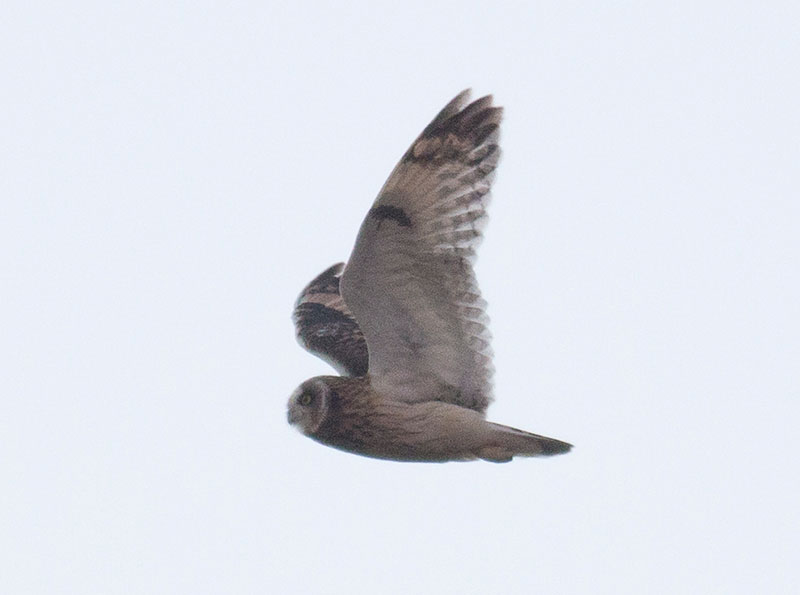Short-eared Owls
12/13/15
By David Brown
On a winter evening just before sunset you pull off a small country road onto the grassy edge of an unmowed farm field. You get out and scan around with your binoculars. In a distant tree you see a perched red-tailed hawk, or if you're even luckier, a rough-legged hawk recently back from its arctic nesting grounds. Five northern harriers are cruising low over the fields with their long pointed wings stretched into a pronounced “V” shape and their white rump patches distinct even at dusk. Most are the tans and browns of females and juveniles but you pick out one that is silver with black wingtips. This is an adult male, known as a “gray ghost.” As it gets almost too dark to see and the harriers are settling down for the night you spot a different bird emerging from the grass. This bird has shorter, rounded wings, a flat face, and the slow buoyant flap of a moth. You spot four more of these birds as you fight darkness, until you are only able to pick them out against the sky or see their light-colored undersides when they bank. Their wings are silent but one barks at you as it flies past. These birds are short-eared owls.

Short-eared Owl
Finding our other species of owls, such as eastern screech, barred, or great horned owls, usually involves going out at night and playing a recording of the call hoping to have an owl answer. Short-eared owls are more often seen than heard and a birder usually goes out specifically looking for them at known locations. Their rough vocalization that is often described as a bark is often heard as the owls fight with each other or with northern harriers.
The scientific name of short-eared owls is Asio flammeus which refers to the fiery streaking of the breast. Author Pete Dunne describes them as “pale beer kegs on wings.” Their wingspan is around three feet which is comparable to that of an American crow. Their bodies average around 15 inches long and they can weigh up to about a pound.
Short-eared owls are found on every continent except Australia and Antarctica. Pennsylvania is at the southern edge of their North American breeding range with only a small number of nesting locations. The owls are not known to nest in Lycoming County, but they are often found in the county from November to March. In winter, short-eared owls are often crepuscular, meaning they are active at dusk and dawn, but they can also be active on cloudy or foggy days.
Their preferred habitat is grasslands. In our area this is mainly farm fields that have been left to grow or airports with tall grass. In other parts of the state they are found at grasslands formed on reclaimed strip mines. They build ground nests lined with grass and are an endangered species in Pennsylvania.
Their main diet is small rodents, but they can also eat small birds. Hunting is mainly done by ear rather than sight. The owls fly low over the terrain and pounce straight down, but often come up empty handed.
If you live in an area with northern harriers, be sure to watch at dusk and you too may enjoy seeing short-eared owls hunting the fields.